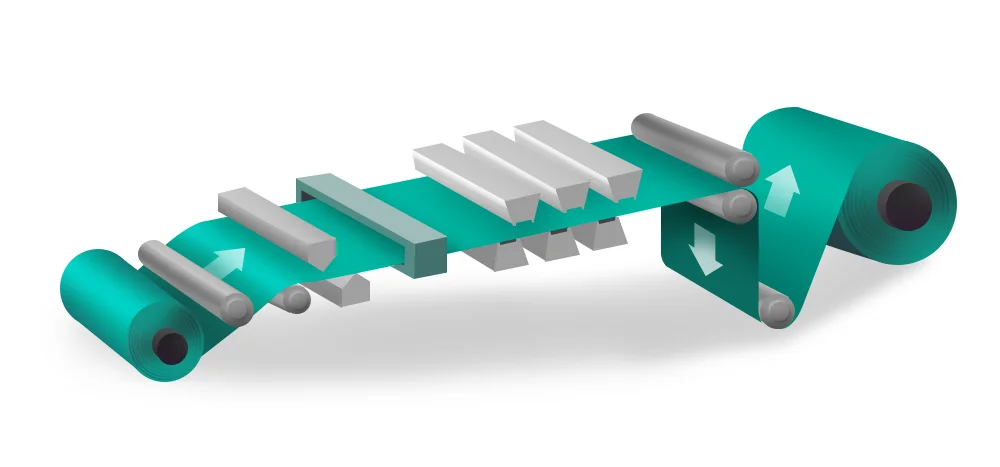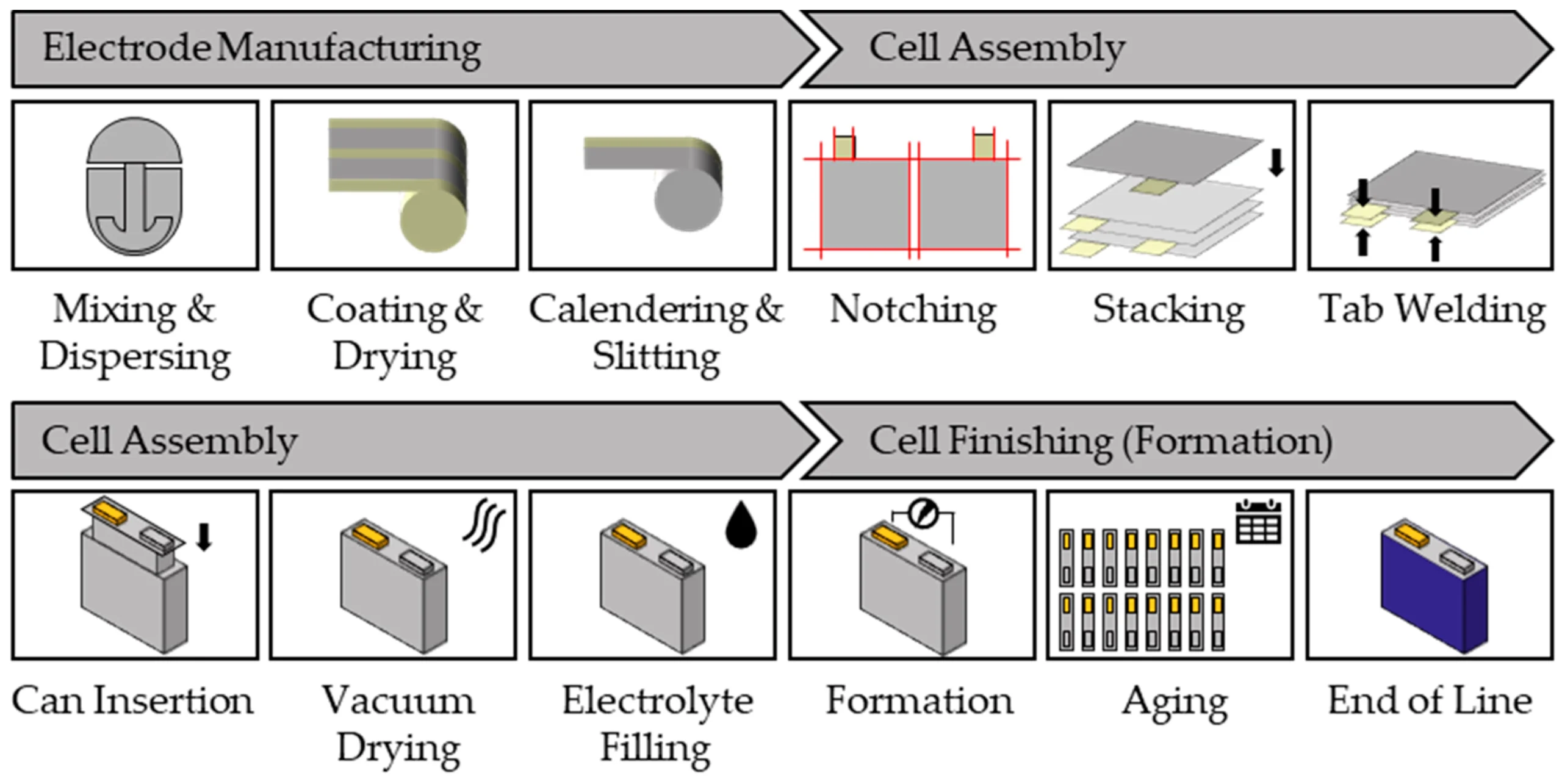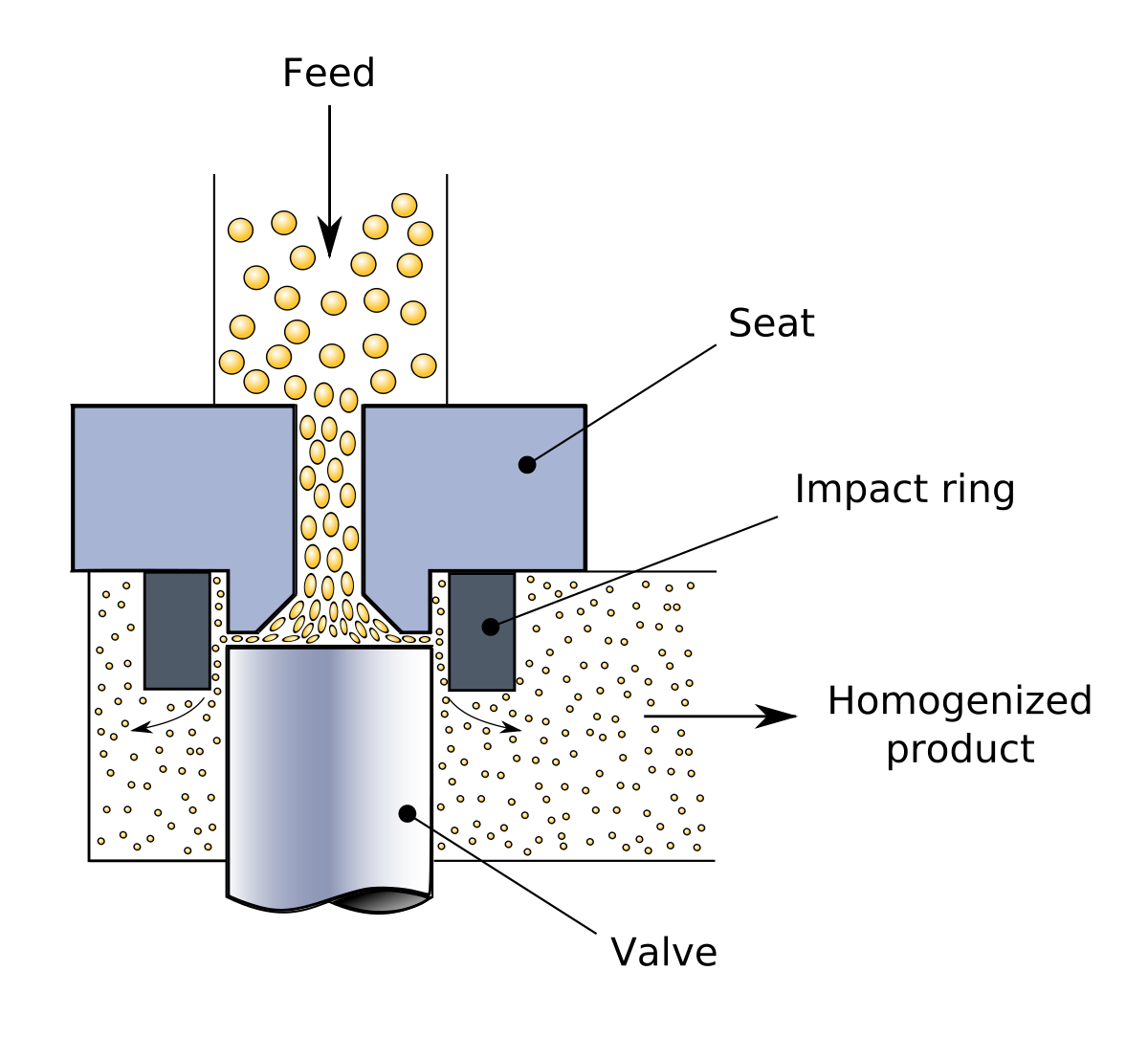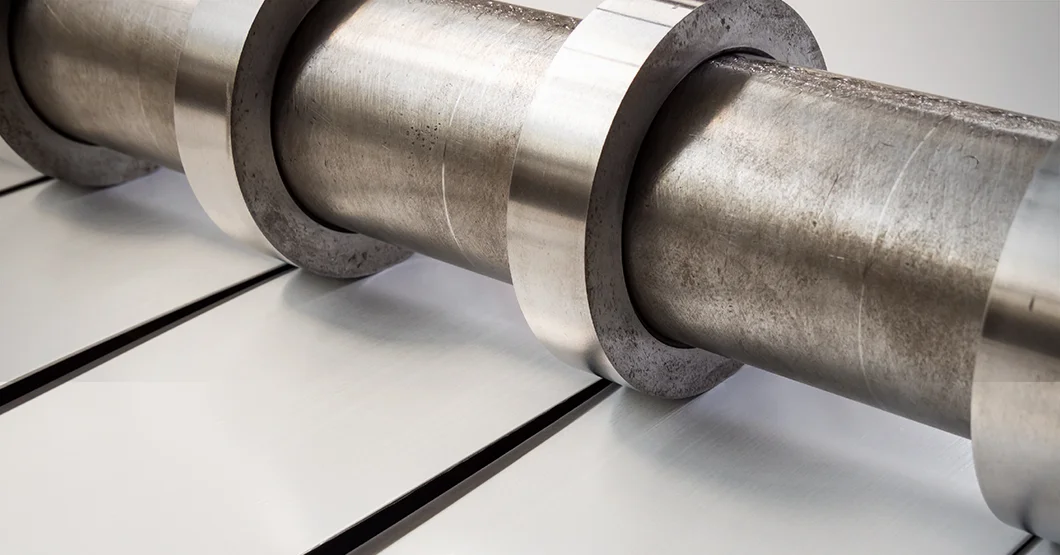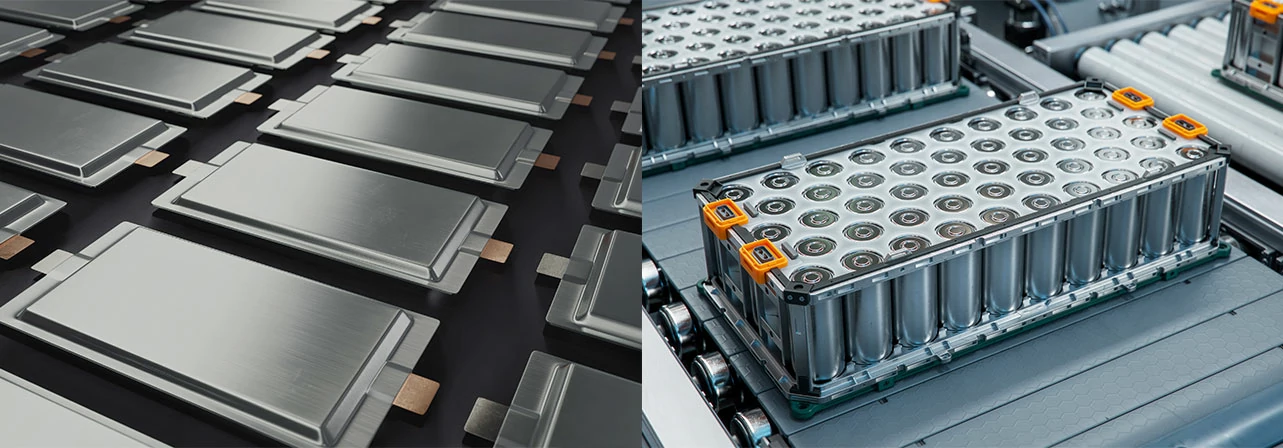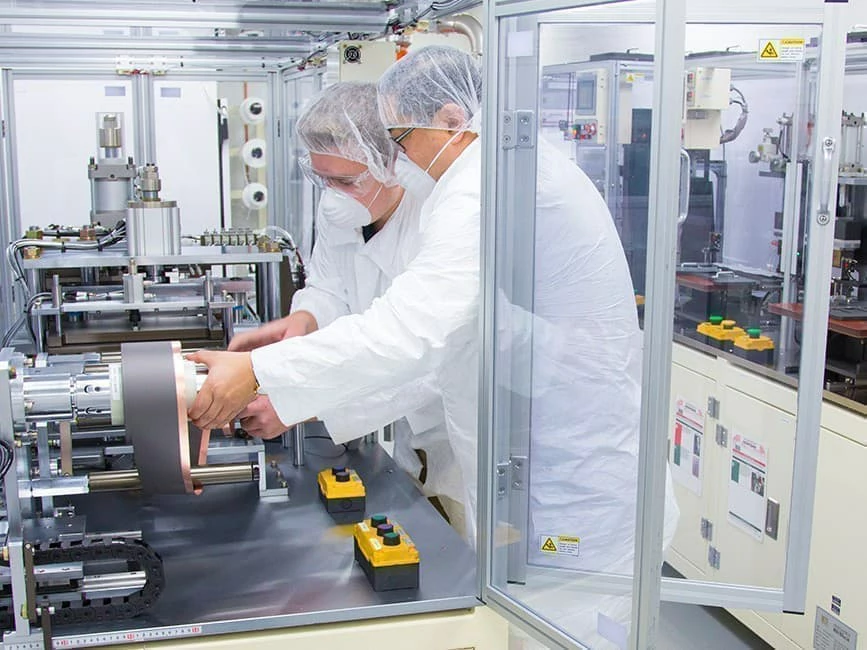Lithium-ion battery electrode sheet baking process
main content
Baking is one of the core processes in the manufacturing of lithium-ion batteries. Its core task is to remove moisture and organic solvents (such as NMP or deionized water) from the coated positive and negative electrode sheets. Residual solvents not only damage the microstructure of the electrodes, but also lead to increased internal resistance of the battery, shortened cycle life and even the risk of thermal runaway. For high-power application scenarios such as lithium-ion start-stop batteries for motorcycles, the uniformity and efficiency of electrode sheet baking are directly related to the battery's rapid charging and discharging capabilities as well as its low-temperature starting performance.
1. Solvent removal and microstructure optimization
The coated electrode sheet is in a wet slurry state, and water and solvents are gradually discharged through evaporation and capillary action. The baking process can be divided into four stages:
Preheating stage: Hot air heats the surface of the electrode sheet, and the solvent begins to vaporize, forming a gas-liquid interface.
Constant-rate drying stage: A large amount of solvent evaporates, and the active substance particles are closely arranged under the action of capillary force. The porosity drops below 30%, and the conductive network is initially formed.
Deceleration drying stage: The internal solvent migrates to the surface through diffusion, a temperature gradient of the electrode sheet is formed, and the binder (such as PVDF or SBR) is redistributed to enhance the particle bonding force.
Stable stage: The moisture content of the electrode sheet is reduced to 2000-3000 PPM (for the positive electrode) or 3000ppm (for the negative electrode) to ensure the stability of the subsequent rolling and slitting processes.
2. Enhanced safety and electrochemical performance
Residual moisture will react with the electrolyte to form HF, corrode the electrode material and damage the SEI film, leading to intensified self-discharge of the battery. Baking, through vacuum negative pressure (≤0.085MPa) and nitrogen protection (dew point ≤40℃), effectively suppresses oxidation side reactions and enhances the battery's cycle stability.
Ii. Baking Process Parameters and Equipment Technology
Temperature gradient: The baking temperature of the positive electrode is usually 95 to 120℃, and that of the negative electrode is 80 to 105℃. Segmented temperature control is adopted (for example, a 48-section oven for the positive electrode, with each section's temperature increasing by 510℃) to prevent surface cracking.
Time control: Due to the thin coating of motorcycle battery electrode sheets (50100μm), the baking time can be shortened to 2030 minutes, while conventional power batteries require 12 hours.
Wind speed and wind pressure: The hot air speed is controlled at 1015m/s, and uniform impact is achieved through a slit type air nozzle (width 4mm). The mean square deviation of the wind speed should be ≤6% to ensure that there are no wavy edge defects on the electrode sheet.
Hot air circulation oven: It adopts a double-sided air supply design, with independent temperature control for the upper and lower air chambers. It is suitable for large-scale production, but has relatively high energy consumption (the energy consumption of a single-pole plate is approximately 0.8kWh/kg).
Infrared hot air composite drying: Infrared radiation (wavelength 1064nm) penetrates the interior of the coating, combined with hot air convection to accelerate solvent migration, increasing the drying efficiency by 40%. However, it is necessary to avoid secondary agglomeration of the binder.
Vacuum microwave drying: Through microwave dielectric heating, the solvent molecules resonate and vaporize, and the drying speed is three times faster than the traditional method. It is especially suitable for the rapid baking of high-nickel cathodes (such as NCM811) at low temperatures (≤80℃).
1. Thin coating rapid drying technology
The density of the positive electrode surface of the motorcycle battery is low (2040mg/cm²). A twin-screw continuous pulping and coating baking combined machine is adopted, and the baking speed can reach 80m/min. By optimizing the Angle of the hot air nozzle (1525°) and the negative pressure strip (vacuum degree ≤0.05MPa), the moisture content meets the standard within 10 seconds.
2. Low-temperature adaptive design
For the low-temperature starting requirements of motorcycles (20℃), after baking, the PVDF crystallinity of the electrode sheet needs to be controlled (through a gradient cooling of 80 to 90℃) to ensure the flexibility of the electrode sheet at low temperatures (bending radius ≤3mm without cracks).
3. Online monitoring and intelligent control
Integrating a near-infrared moisture meter (with an accuracy of ±50ppm) and a machine vision system, it can detect the uniformity of electrode sheet drying in real time, and dynamically adjust the temperature and wind speed of the oven through the PID algorithm, keeping the surface density fluctuation within ±1.5%.
Iv. Technical Challenges and Innovation Directions
1. Difficulties in baking high-nickel materials
High-nickel positive ions such as NCM811 are highly hygroscopic (hygroscopic rate > 2000ppm/24h), and should be operated in a closed oven with a dew point of ≤40℃, and nitrogen should be used for circulation displacement (purity ≥99.999%).
2. Environmental protection and energy consumption optimization
Develop water-based binders (such as LA133) with a low-temperature baking process (≤70℃), which reduces energy consumption by 30% compared with the traditional NMP system. Promote the microwave and hot air composite drying technology, and increase the comprehensive energy efficiency ratio to above 2.5.
3. Intelligent baking system
Based on digital twin technology, a simulation model of the baking process is constructed. The drying critical point of the electrode sheet is predicted through machine learning to achieve dynamic compression of the baking time (such as optimizing from 30 minutes to 22 minutes).
Conclusion
Baking, as the "drying heart" of lithium-ion battery manufacturing, its process innovation is the core for enhancing battery performance and production efficiency. In the field of motorcycle start-stop batteries, through thin-coating rapid drying, composite energy efficiency technology and intelligent control, the baking process is evolving towards ultra-low energy consumption and high precision. In the future, with breakthroughs in solid-state battery and dry electrode technologies, the baking process may be deeply integrated with coating and rolling, providing more efficient manufacturing solutions for new energy power systems.
RELATED BLOG

START-STOP LITHIUM battery
Enov start-stop battery is designed to provide excellent performance for high-demand start-stop vaehicles. It adopts the third-generation intelligent lithium platform architecture to achieve technological breakthroughs in core indicators such as cycle life, environmental adaptability and energy density. Compared with the traditional lead-acid battery system, the energy efficiency is increased by 210%, the cycle life is extended by 8-10 times, and the monthly self-discharge rate is controlled within 3%. Enov's unique low-temperature battery technology makes a breakthrough in achieving stable output in the whole climate domain from -30℃ to 65℃, maintaining more than 90% of the effective capacity release under extremely cold conditions (-30℃), and maintaining 90% of the capacity in high temperature environments (65℃).
The start-stop battery series products cover the mainstream voltage platform of 12V/24V/48V, and support flexible configuration of LFP (lithium iron phosphate) and NCM (lithium nickel cobalt manganese oxide) dual-material system. All models adopt modular design to support customization of different model specifications. Enuo engineering and technical team to provide full cycle technical service support, if you need, please contact us.
Other products
UAV BATTERY
LITHIUM ENERGY STORAGE BATTERY
QUICK INQUIRY
FAQ
Access to high frequency technical questions with one click, get accurate answers on product application, after-sales policy and customization process.
Service and Support
Get the latest product specifications, explore professional OEM/ODM customization services, click to open exclusive technical support and production solutions.
Become a Partner
We sincerely invite resources to interconnect, work together for win-win development, and immediately open a new chapter of strategic cooperation!
